Edipsos (or Loutra Edipsou), nestled on the northwestern coast of Evia Island, stands as Greece’s premier spa town, renowned for its therapeutic thermal springs. With a population of approximately 2,500 residents, this locale not only offers rejuvenation but also serves as an excellent base for exploring northern Evia. The town’s rich history, combined with its modern amenities, makes it a compelling destination for both relaxation and adventure seekers.
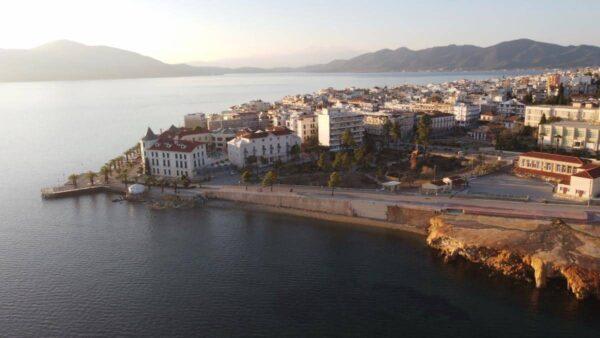
Affiliation disclosure: By purchasing goods or services via the links contained in this post, I may be earning a small commission from the seller's profit, without you being charged any extra penny. You will be thus greatly helping me to maintain and keep enriching this website. Thanks!
How to Get to Edipsos
By Car, you have two primary routes to reach Edipsos from Athens:
- Via Chalkida: Drive north from Athens to Chalkida, the capital of Evia Island, accessible via two bridges. Once in Chalkida, continue on the main road leading north towards Edipsos. The journey spans approximately 180 kilometers and typically takes around 3 hours, offering scenic views of the island’s diverse landscapes.
- Via Arkitsa Ferry: Alternatively, head north from Athens to the coastal town of Arkitsa, located about 150 kilometers away. From Arkitsa, regular ferry services transport vehicles and passengers directly to Edipsos. The ferry ride provides a pleasant maritime experience and can be a refreshing break during the journey.
The second option will cost you less and be faster if you coordinate your trip with the ferry. Check the up-to-date ferry schedule here.
If you haven’t got a car already, you can compare some of the best rental deals here.
By Public Transport: At the time of writing, two buses depart daily from Liossion Bus Station (location) in Athens for Edipsos at 8:45 and 14:45. One additional route departs at 12:45 on Fridays and Sundays. Check the bus company’s official site for updated routes.
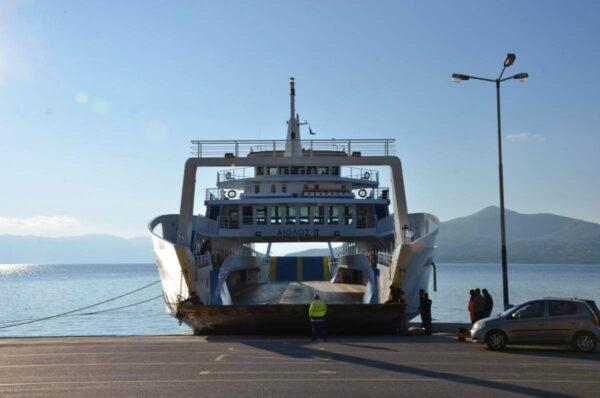
Where to Stay in Edipsos
Edipsos offers a variety of accommodations, ranging from luxury spa resorts to budget-friendly guesthouses. Many hotels take advantage of the region’s thermal waters, featuring in-house spas and wellness facilities.
- Thermae Sylla Spa & Wellness Hotel – A five-star establishment and one of Greece’s most renowned spa resorts, featuring natural thermal pools and high-end wellness treatments.
- 9 Queens Spa Hotel – A boutique hotel with modern amenities and direct access to therapeutic mineral springs.
- Hotel Artemision – A comfortable mid-range option with a traditional atmosphere and great views of the sea.
- Studios and Apartments – Various rental options are available for those seeking self-catering accommodations, ideal for longer stays.
Booking in advance, especially during the summer months, is highly recommended.
Explore more options on the convenient map below:
Stay22 is a handy tool that lets you search for and compare stays and experiences across multiple platforms on the same neat, interactive map. Hover over the listings to see the details. Click on the top-right settings icon to adjust your preferences; switch between hotels, experiences, or restaurants; and activate clever map overlays displaying information like transit lines or concentrations of sights. Click on the Show List button for the listings to appear in a list format. Booking via this map, I will be earning a small cut of the platform's profit without you being charged any extra penny. You will be thus greatly helping me to maintain and keep enriching this website. Thanks!
What to Do in Edipsos
Swim in the Hot Springs
Loutra Edipsou is famous for its natural thermal springs, which emerge from the seabed and flow directly into the coastline. The hot mineral-rich waters, known for their healing properties, create natural seaside pools where visitors can bathe for free. Over time, the mineral deposits have sculpted the surrounding rocks into unique, otherworldly formations, adding to the mystical allure of the landscape.
The springs vary significantly in temperature, ranging from lukewarm to nearly boiling, with some exceeding 80°C (176°F). This variation creates a striking experience, especially at the seafront hot springs, where bathers can float between warm thermal currents and the cooler Aegean waters in a single swim. The contrast between the heat of the springs and the refreshing sea makes for a truly unique bathing experience.
These geothermal waters are heated by deep underground activity, a process linked to the region’s tectonic movements. Rich in minerals such as sulfur, calcium, and magnesium, they are renowned for their therapeutic properties, believed to alleviate ailments like arthritis, rheumatism, and skin conditions.
In addition to the well-known seafront springs, there are several other hot water sources scattered throughout the town, as well as in the nearby village of Gialtra, including private spa facilities and hidden inland springs. Each location offers a different experience, from natural rock pools to luxurious, man-made thermal baths, ensuring that every visitor can find their perfect spot for relaxation and rejuvenation.
Here’s the location of the main springs.
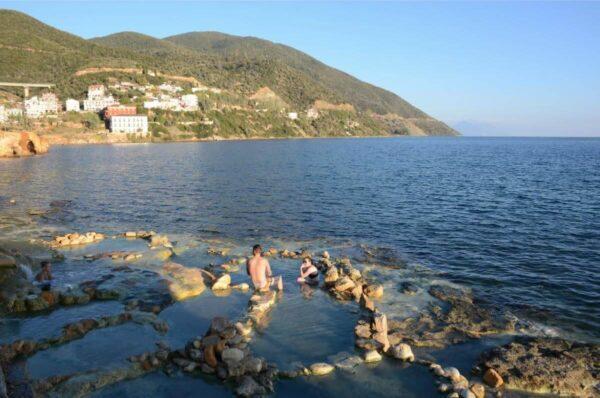
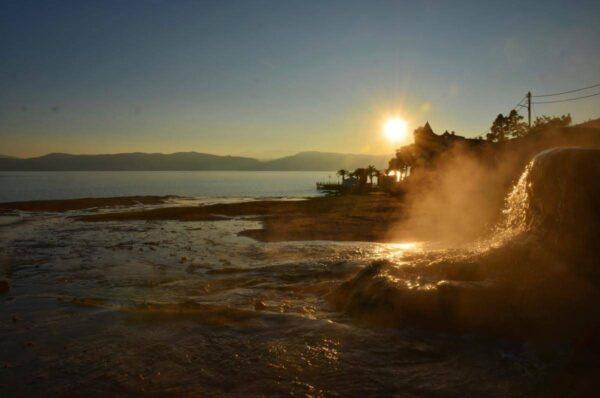
Visit the Roman General Sylla’s Spa Cave
This historical cave is linked to the Roman general Lucius Cornelius Sulla Felix, the Republic’s first power usurper, who allegedly visited Edipsos for its therapeutic waters. The “cave” is actually a small domed structure, entirely covered by deposits from the sulfurous waters that flow in the area, giving it the appearance of a natural grotto. At its entrance, two massive statue bases bear inscriptions dedicated to the Roman emperors Hadrian and Septimius Severus, offered by the municipality of Istiaia. Today, the site remains a fascinating landmark showcasing the town’s long-standing connection with hydrotherapy. (location)
View the Archaeological Collection of Edipsos
Located in the town, this small museum houses ancient artifacts from the surrounding region, including sculptures, pottery, and relics that highlight Edipsos’ historical significance. The collection is displayed in the mezzanine of the EOT hydrotherapy center, with some larger exhibits in the reception area. Notable artifacts include a plaque with Hercules’ bow and lion skin, a life-sized Roman statue, and a Mycenaean sword. The mezzanine also features a 4th-century BC funerary stele from Gialtra and prehistoric finds from Koumpi Hill. (location)
Discover the Historic Hotels: Iraklion & Stadio
These old, grand hotels are remnants of Edipsos’s golden era, when aristocrats, politicians, and intellectuals from across Europe visited for spa treatments. Featuring some of the town’s best examples of Belle Époque architecture, these buildings showcase intricate facades, grand balconies, and timeless elegance, making them worthwhile stops for history and architecture enthusiasts. (location)
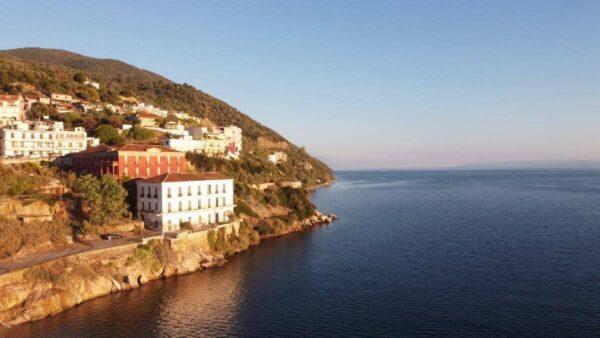
Visit Upper Edipsos Village
A charming traditional village located above the spa town, Upper Edipsos offers panoramic views, old stone houses, and a glimpse into local life. It’s a great place to escape the tourist crowds and enjoy authentic Greek hospitality. (location)
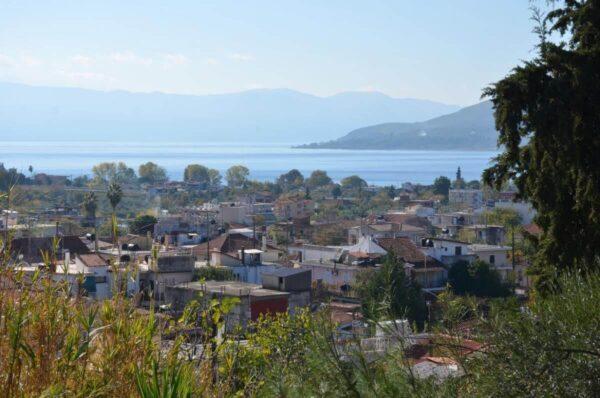
Hike Mount Telethrio
For nature lovers, Mount Telethrio provides scenic trails through lush forests, leading to breathtaking viewpoints overlooking northern Evia. (location)
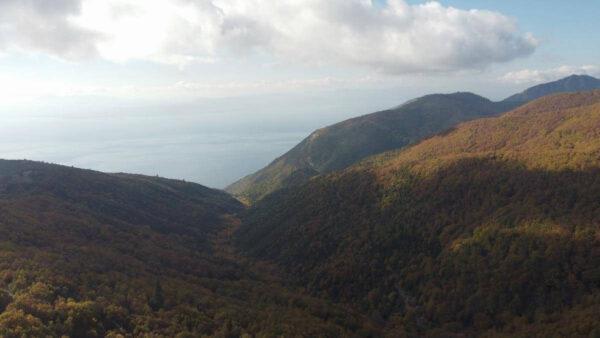
Walk to Koumpi Hill
A lesser-known spot near Upper Edipsos offering incredible views of the surrounding sea and coastline. The hill provides a peaceful retreat and is an excellent location for photography and quiet contemplation. Archaeological findings here include pottery from the Neolithic period and evidence of a settlement from the Middle Helladic period, with storage jars and traces of copper processing, indicating early metallurgical activity in the region. (location)
Experience the South Coast’s Views & Diving
The southern coastline of Edipsos boasts crystal-clear waters, ideal for diving and snorkeling. The very deep waters here host a rich biodiversity, making it a fantastic spot to observe marine life.
Where to Eat in Edipsos
- Yiasemi – A charming taverna offering traditional Greek dishes with fresh ingredients and a welcoming atmosphere.
- O Pontios – Known for its delicious Pontian cuisine, this spot serves unique flavors and hearty meals inspired by the Black Sea region.
- Aristos Family Taverna – A classic Greek taverna with home-cooked meals, specializing in grilled meats and seafood.
- Fairy’s Gyros – A great place for a quick and tasty gyros, perfect for a casual meal on the go.
- La’ Coast – A stylish bar offering refreshing cocktails and a relaxed ambiance, ideal for evening drinks by the sea.
History of Edipsos
Edipsos in the Greek Mythology
According to Greek mythology, the hot springs of Edipsos were created at the request of the goddess Athena. She asked Hephaestus, the god of fire and craftsmanship, to bring thermal waters to the surface so that her favored hero, Hercules, could bathe and rejuvenate after completing his legendary labors. Hephaestus struck the ground with his divine hammer, and the springs emerged, offering their healing properties to all who visited.
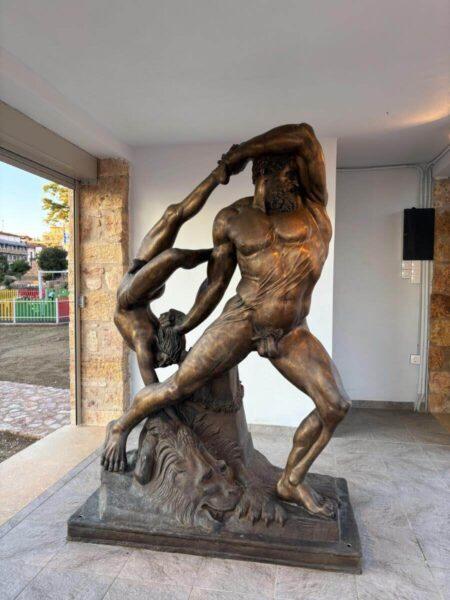
A later local tradition offers a different story: Edipsos, once known as Leipsó, was believed to be the biblical city of sin, akin to Sodom and Gomorrah. According to legend, its destruction came when the ground overturned and sank, leaving only the thermal waters behind. The story tells of a lone survivor, a woman named Zacharaina or Agathosyni, who, along with her pig and piglets, defied a divine warning not to look back at the city’s ruin. She was turned to stone, her form said to remain as a landmark above the cemetery of Edipsos.
Prehistoric and Ancient Times
Edipsos has been inhabited since prehistoric times. Archaeological discoveries at Koumpi Hill and nearby areas reveal settlements dating back to the Neolithic period (circa 6000–3000 BCE). Artifacts indicate continuous habitation through the Mycenaean era.
During classical antiquity, Edipsos was part of the territory of Istiaia. The town gained prominence during the Roman period when its thermal baths became widely known. Roman aristocrats, including the famous general Sulla, frequently visited to take advantage of the mineral-rich waters.
Byzantine & Ottoman Periods
During the Byzantine era, the town saw a decline due to changes in bathing customs associated with Christian beliefs. Later, under Ottoman rule, the area became a small agricultural settlement, overshadowed by larger towns in northern Evia.
Modern Era
The 19th and 20th centuries marked a revival for Edipsos, as hydrotherapy regained popularity. The construction of grand hotels, spas, and bathhouses attracted Greece’s elite and international visitors, including Winston Churchill, Aristotle Onassis, and Maria Callas. Today, Edipsos remains one of Greece’s most famous spa destinations, blending historical charm with modern wellness tourism.
Places to Visit nearby
- Lichadonisia – A stunning cluster of islets with golden beaches and turquoise waters, often called the “Greek Seychelles.”
- Agios Georgios Lichadas – A picturesque village with traditional architecture and beautiful sea views.
- Istiaia – A nearby town with vibrant markets, historic sites, and a more local atmosphere.
- Oreoi – A coastal village with a charming harbor, ancient ruins, and excellent seafood restaurants.
- Gialtra – A peaceful seaside village known for its natural hot springs and beautiful coastal walks.
Videos
Photos
View (and if you want use) all my photographs from Edipsos in higher resolution.
